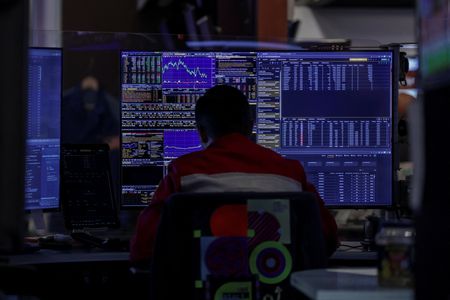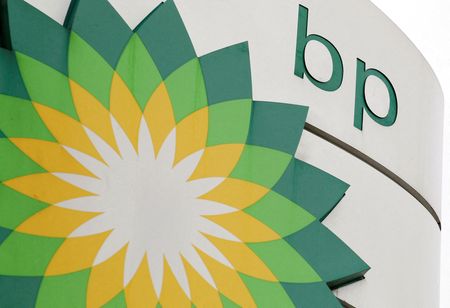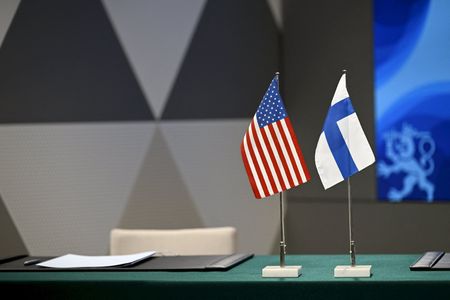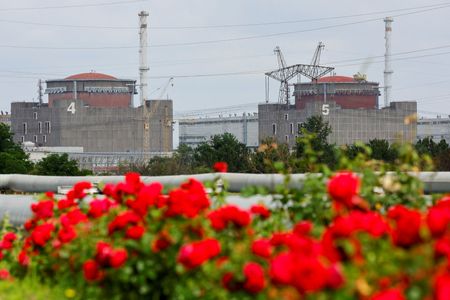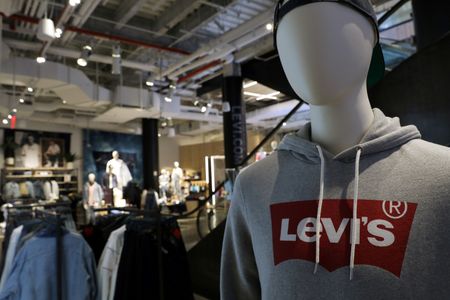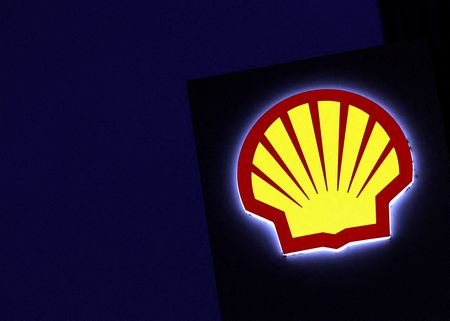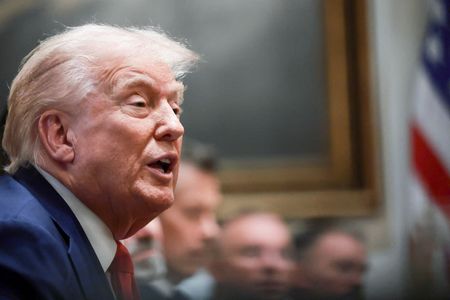By Chibuike Oguh and Suzanne McGee
NEW YORK (Reuters) -In 1996, then-Federal Reserve chairman Alan Greenspan wondered aloud how we could know when “irrational exuberance” had gripped financial markets, comments that led many to later describe him as a sage who anticipated the dotcom boom and bust.
Now, when markets repeatedly peak as the prospects of artificial intelligence lift valuations of several technology heavyweights including Nvidia, Microsoft and Oracle, similar warnings are stacking up.
International Monetary Fund chief Kristalina Georgieva warned on Wednesday about the risks to the world economy from potentially large corrections in lofty stock markets.
JPMorgan Chase CEO Jamie Dimon also warned of a heightened risk of a significant correction in the U.S. stock market within the next six months to two years, the BBC reported.
“Jamie Dimon is like the Greenspan of today,” said Mark Malek, chief investment officer at Siebert Financial, who back then was working on multiple acquisition deals on behalf of Lucent Technologies, which itself went from being an internet market darling to a poster child for Greenspan’s irrational exuberance.
In December 1996, Greenspan posed a seemingly innocuous rhetorical question during a dinner speech: “How do we know when irrational exuberance has unduly escalated asset values?”
The market reaction was immediate. Asian stocks fell 3%; those in Europe followed suit and the next morning, the S&P 500 tumbled 2%. But within days, those losses had evaporated, and within a few weeks, stocks had not only regained all that lost ground but were trading 10% above the levels they were when Greenspan spoke.
It would take more than three years for the dotcom bubble to burst and give Greenspan the reputation of possessing uncanny foresight, even though anyone who heeded his dinner warning bell would have forfeited gains of more than 100% over that time period.
BULLISH BEHAVIOR ON DISPLAY
Investors draw both parallels and divergences with the current market, where the S&P 500, Nasdaq and the Dow have hit new heights this year. The S&P 500 and the Nasdaq hit fresh record highs on Thursday and are up about 15% and 19%, respectively. The Dow has gained about 10% year-to-date.
Furthermore, the S&P 500’s price-to-earnings ratio, based on expected 12-month earnings for its constituents, last stood at around 23 times, according to LSEG Datastream. That level is near its highest in five years and well above its 10-year average of 18.7, although the P/E ratio reached around the 25 level in 1999 and 2000, the data showed.
The heavyweight technology sector was trading at 30 times forward earnings estimates, above its long-term average of 21.4. The sector’s valuation surged as high as 48 times during the dotcom era.
Wasif Latif, chief investment officer at Sarmaya Partners, said current market valuations are a combination of what happened in the late 1990s, just before the dotcom crash, and the early 1970s during the so-called “Nifty Fifty” era when investors were giddy over a group of large blue-chip stocks.
The Magnificent Seven stocks represent megacap technology companies that have accounted for a large share of S&P 500 growth.
“The Mag 7 and the top 10 names in the S&P 500 seem to have the same aura about them in this market,” Latif said. “From that perspective, in our view, this is the equivalent of the 1972 market partying like it’s 1999.”
In the U.S. equity options market, with one measure of bullish trading near four-year highs, much of the bullish options flow concentrated in high-flying tech names, particularly those exposed to the AI investment theme.
“That’s kind of the epicenter of it … people chasing tech upside,” Greg Boutle, head of U.S. equity & derivative strategy at BNP Paribas, said.
Today’s bull market again brings fears about over-exuberance surrounding artificial intelligence may lead to a significant correction in the broader market, some warn.
In 1996, “we were all blinded to the reality of what was happening, and some would argue we’re in the same situation today,” said Malek.
But other investors maintain an optimistic outlook. Goldman Sachs analysts argued that while history suggests that bubbles are driven by exuberance that builds around transformative technology, the current market rally is different because it seems to be driven by “fundamental growth rather than irrational speculation” and AI has been dominated by a few incumbents.
The evidence that supports the case for irrational exuberance is also undermined by the fact that even though institutional investor positioning has increased it still remains roughly neutral and retail investors have allocated more to bonds and money markets than cash, said Nationwide Chief Market Strategist Mark Hackett.
“We are watching closely for signs of complacency, but we are not seeing it, reinforcing the belief that this is the least loved bull market on record,” Hackett said.
Comparisons to 1996 and the dotcom bubble fall short on several fronts, said Art Hogan, market strategist at B. Riley Wealth in Boston. Back in 1996, he was a trader specializing in technology stocks, watching the dotcom boom explode in front of his eyes.
“Today, the companies that are leading this revolution already existed before AI began dominating the market chatter, and had significant businesses and growth. And those valuations today aren’t as ridiculous,” Hogan said.
(Reporting by Chibuike Oguh and Suzanne McGee in New York; Additional reporting by Saqib Iqbal Ahmed, Lewis Krauskopf and Chuck Mikolajczak; editing by Alden Bentley, Megan Davies and Nick Zieminski)

